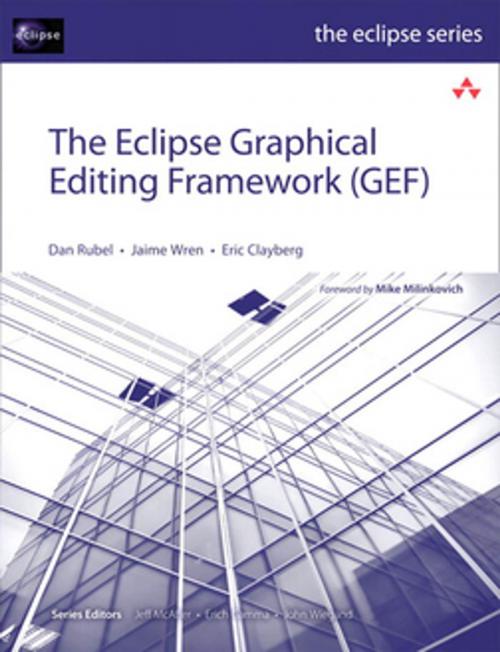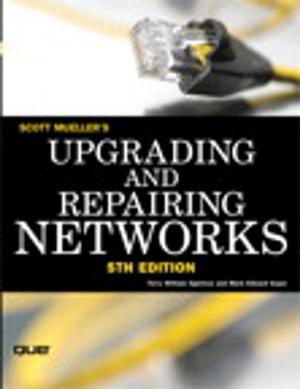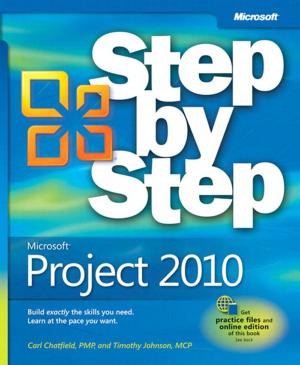The Eclipse Graphical Editing Framework (GEF)
Nonfiction, Computers, Internet, Web Development, Java, Programming, Programming Languages| Author: | Dan Rubel, Jaime Wren, Eric Clayberg | ISBN: | 9780321718488 |
| Publisher: | Pearson Education | Publication: | August 7, 2011 |
| Imprint: | Addison-Wesley Professional | Language: | English |
| Author: | Dan Rubel, Jaime Wren, Eric Clayberg |
| ISBN: | 9780321718488 |
| Publisher: | Pearson Education |
| Publication: | August 7, 2011 |
| Imprint: | Addison-Wesley Professional |
| Language: | English |
As Eclipse-based applications become increasingly popular, users are demanding more sophisticated graphical interfaces. When standard widgets aren’t enough, graphics built with GEF are often the best solution. ***The Eclipse Graphical Editing Framework (GEF)***covers everything Java tool developers need to create tomorrow’s richest, most visual interfaces.
This practical, hands-on guide begins by introducing GEF, Draw2D, and Zest, and demonstrating what can be achieved with them. Next, the authors walk through building a simple Draw2D example, helping new GEF developers understand the core capabilities available to them. Building on this foundation, they progressively introduce more of the Draw2D frameworks, including Figures, Layout Managers, Connections, Layers, and Viewports. They present a chapter-length graph visualization project based on Zest, followed by detailed coverage of non-Draw2D portions of GEF.
The book’s final section walks step by step through developing a complete GEF editor. Each chapter focuses on a different aspect of the problem, and includes challenges, solutions, diagrams, screenshots, cookbook-style code examples, and more.
This book is organized to help developers solve immediate problems quickly, while also gaining in-depth knowledge for building advanced solutions. Relevant APIs are included in several chapters, making this an even more useful standalone reference.
This book
- Introduces GEF application components such as shapes, flow, logic, and text
- Explains Draw2D architecture, drawing features, and event processing
- Shows how to create and customize figures, use painting and borders, and work with each Draw2D Layout Manager
- Thoroughly explains GEF models, including domain and presentation information, populating diagrams, and more
- Shows how to use Zest’s content providers, filters, and layout algorithms
- Covers EditParts, EditPolicies, Tools, Commands, Actions, and much more
The Eclipse Graphical Editing Framework (GEF)
is the best resource for all Java tool developers who want to construct sophisticated graphical editing products that integrate with Eclipse, for experienced Eclipse users who want to start creating their own graphical tools, and for anyone who wants to see what makes GEF tick.
As Eclipse-based applications become increasingly popular, users are demanding more sophisticated graphical interfaces. When standard widgets aren’t enough, graphics built with GEF are often the best solution. ***The Eclipse Graphical Editing Framework (GEF)***covers everything Java tool developers need to create tomorrow’s richest, most visual interfaces.
This practical, hands-on guide begins by introducing GEF, Draw2D, and Zest, and demonstrating what can be achieved with them. Next, the authors walk through building a simple Draw2D example, helping new GEF developers understand the core capabilities available to them. Building on this foundation, they progressively introduce more of the Draw2D frameworks, including Figures, Layout Managers, Connections, Layers, and Viewports. They present a chapter-length graph visualization project based on Zest, followed by detailed coverage of non-Draw2D portions of GEF.
The book’s final section walks step by step through developing a complete GEF editor. Each chapter focuses on a different aspect of the problem, and includes challenges, solutions, diagrams, screenshots, cookbook-style code examples, and more.
This book is organized to help developers solve immediate problems quickly, while also gaining in-depth knowledge for building advanced solutions. Relevant APIs are included in several chapters, making this an even more useful standalone reference.
This book
- Introduces GEF application components such as shapes, flow, logic, and text
- Explains Draw2D architecture, drawing features, and event processing
- Shows how to create and customize figures, use painting and borders, and work with each Draw2D Layout Manager
- Thoroughly explains GEF models, including domain and presentation information, populating diagrams, and more
- Shows how to use Zest’s content providers, filters, and layout algorithms
- Covers EditParts, EditPolicies, Tools, Commands, Actions, and much more
The Eclipse Graphical Editing Framework (GEF)
is the best resource for all Java tool developers who want to construct sophisticated graphical editing products that integrate with Eclipse, for experienced Eclipse users who want to start creating their own graphical tools, and for anyone who wants to see what makes GEF tick.















